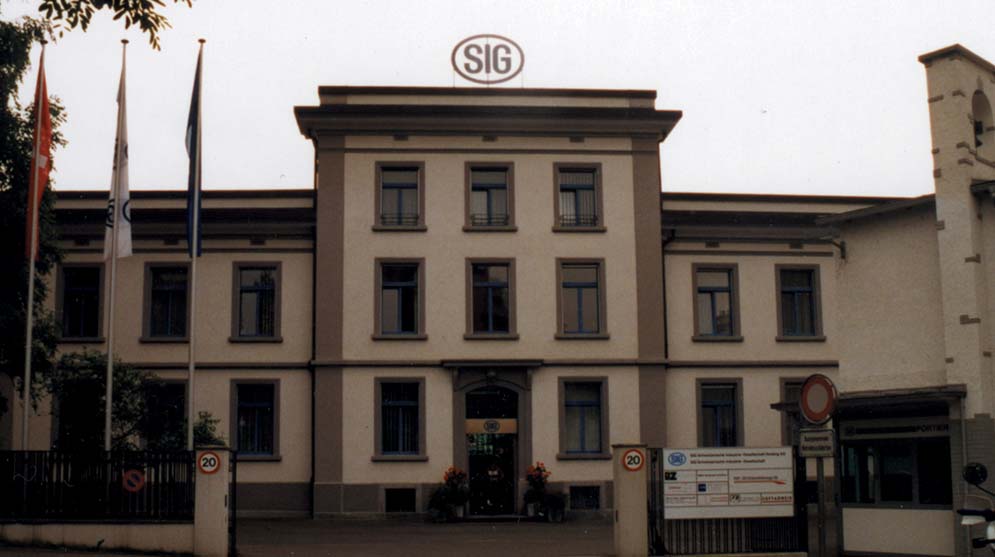By Mark Adkins
Located on the bank of the Rhein Falls, SIG (Schweizerische Industrie Gesellschaft) is situated in the picturesque town of Schaffhausen, Switzerland. Headquarters to an international industrial organization, it’s subsidiaries includes SIG-Sauer & Sons in Germany, Hammerli in Lenzberg, and partnership with SIGARMS Inc. of Exeter, New Hampshire. In addition to firearms, SIG is a major supplier of canning and food packaging machinery, as well as railroad locomotives and equipment. In fact, the main building had once been a wagon wheel factory, obtaining its primitive power source directly from the mighty Rhein Falls. Today, SIG represents one of the foremost industrial enterprises and employs many thousands of people. Their future success is assured by both recreational and police firearms business as well as from government sales in supplying and maintains the Swiss Army with its current battle rifle, the Strumgewehr model 90.
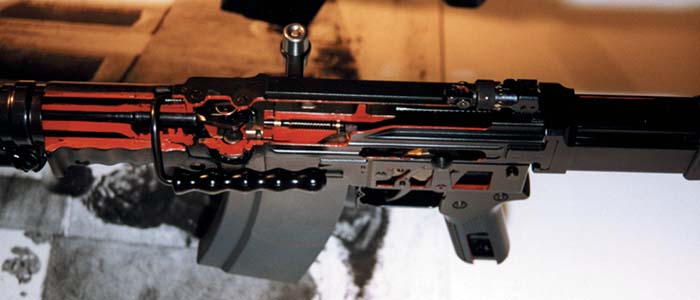
The production facilities at the Schaffhausen factory are state of the art. During a tour of the manufacturing floor, I was able to see firsthand many of the procedures utilized in the assembly of the Stgw 90, as well as various other accessories manufactured in house. Not only were the most modern standards met in both the layout and design of the assemblyline, but all machinery was first rate. For obvious reason, photographing the assembly line was not permissible. But I was shown all facets of Stgw 90 productions, from laser cutting of the receiver, to the phosphate and electrocoating of the firearms major parts. All throughout the factory tour, my guide was Marta Pfleger. She exhibited a vast knowledge of all aspects involved in the production of the Stwg 90. Something that immediately became recognizable was the employee interaction among all levels of personnel. Marta explained that Swiss people do not have the separation of management and labor as we do in America. All of the employees showed a genuine concern in their various duties, and were more than happy to explain what the job at hand entailed (using Marta as a translator for my poor German). The pride of the finished product showed up in every workstation. I even had a few laughs with the woman who’s job it was to apply the red and white paints into the rifles selector markings and sights adjustments. She has only been doing the job for twenty or so years and still enjoyed working!
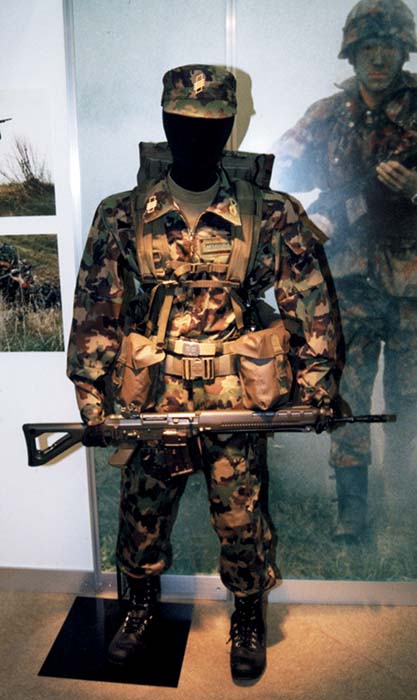
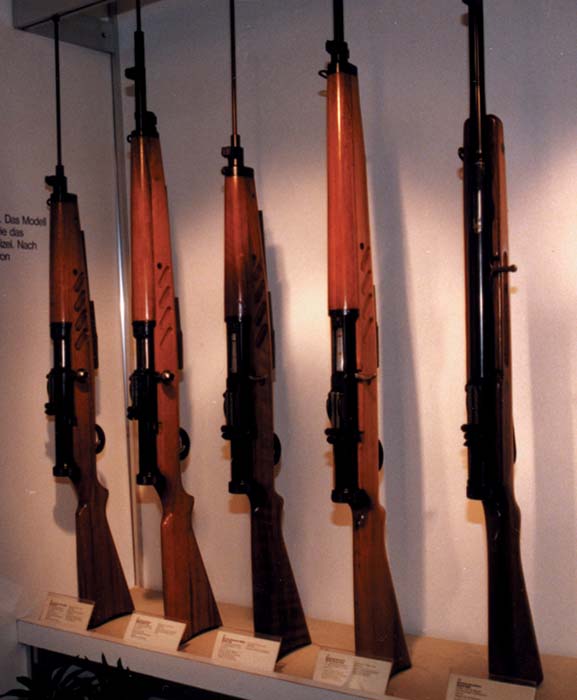
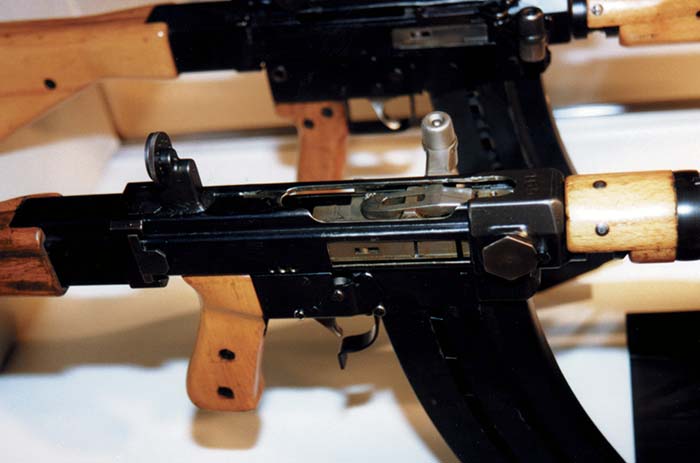
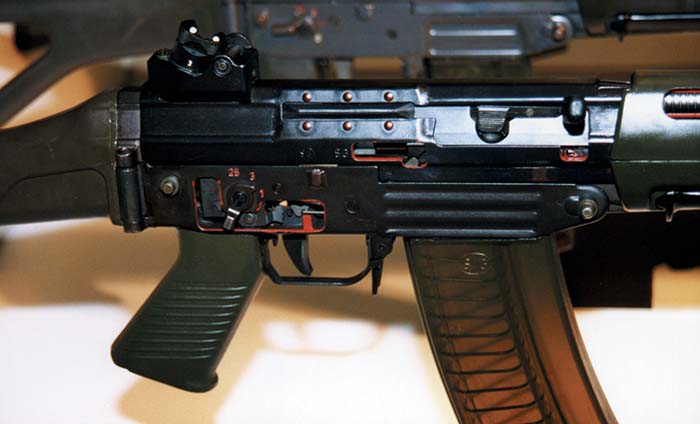
Next was the actual test firing and computer sight-in of the assembled rifles. This is done in one of SIG’s underground firing ranges at 100 meters. The process involved a static rifle rest with the employee firing different shot groups to establish the correct zero. A laser was then attached to the rifle and a computer-generated image displayed the exact shot pattern onto the screen. The final string of bullets fired verified the correct sight settings, and the front sight was then stamped with its proper alignment indentation marks. I am not aware of any other firearm manufacturer going through that exact of a process to guarantee their rifle leaves the factory sighted in and functioning properly. Again, the quality of SIG comes through!
The remainder of the testing facilities utilized an underground 300-meter firing tunnel and an indoor pistol firing range. Again, computers and state-of-the-art equipment are used in testing the many firearms produced there. On display was the new SIG Sauer Model 205 rifle, which set the standards for modern 300-meter target shooting. Also seen were racks of privately owned civilian’s rifles which had been sent back to SIG to have new barrels installed. These were to be test fired and sighted in at 300 meters, which is the normal Swiss shooting distance used on all of the nation’s rifle ranges. Shooting is the national sport of Switzerland and all males are being issued the select fire Stgw 90 for their active military careers which lasts until they are 42 years old. Most Swiss continue shooting well beyond that age and are allowed to purchase their own military rifle from the government.
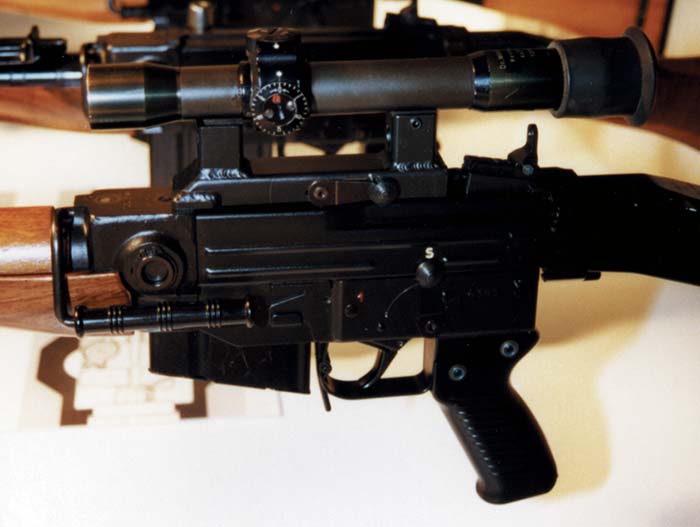
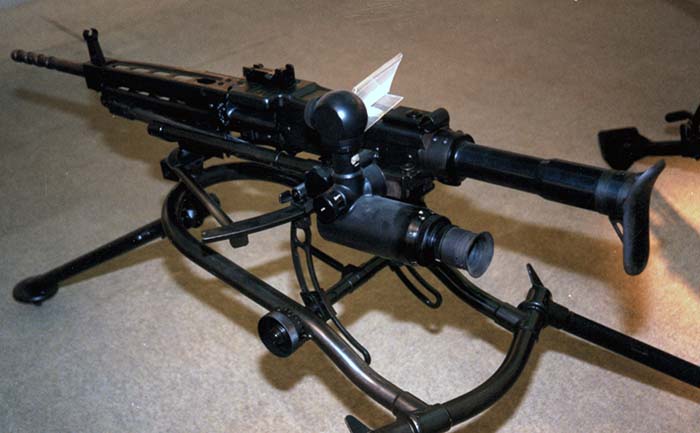
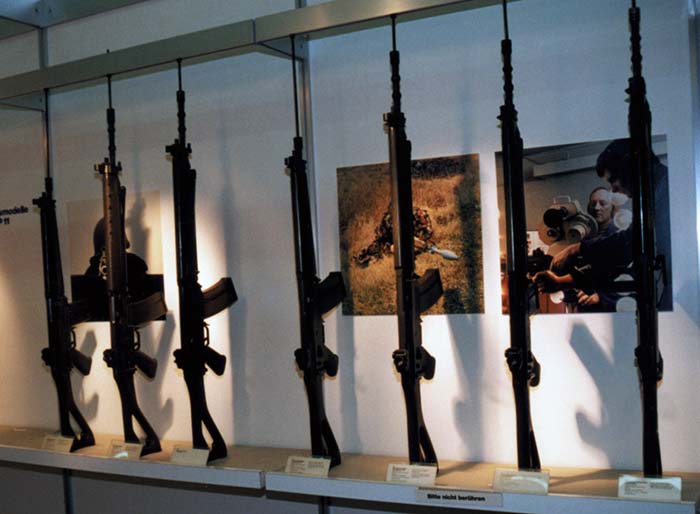
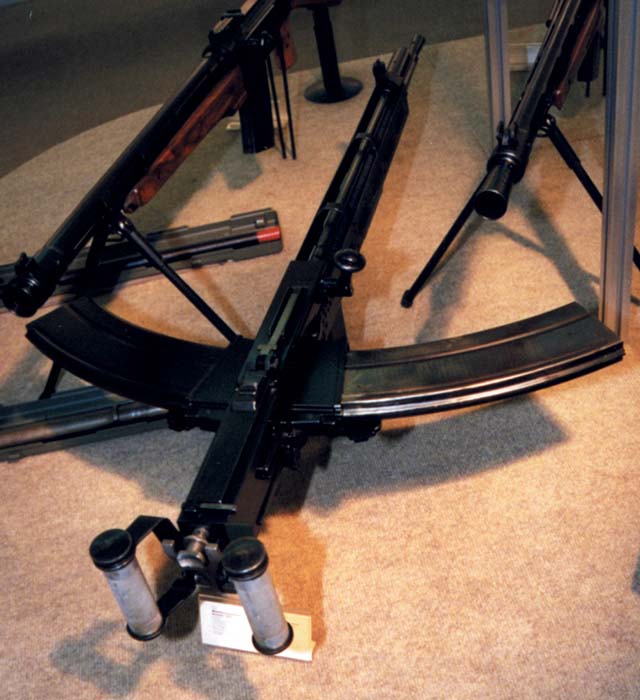

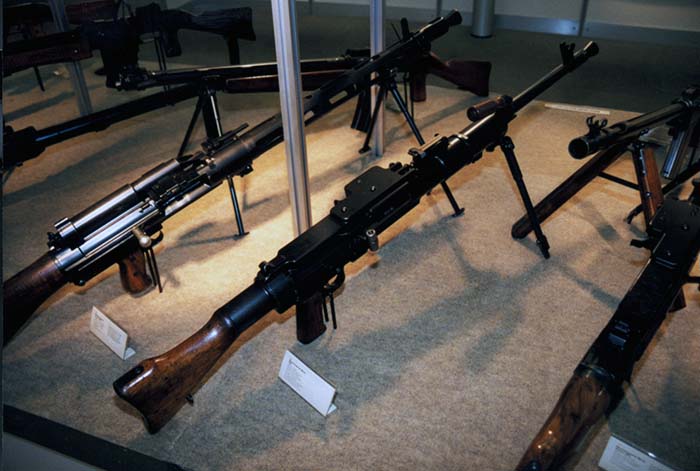
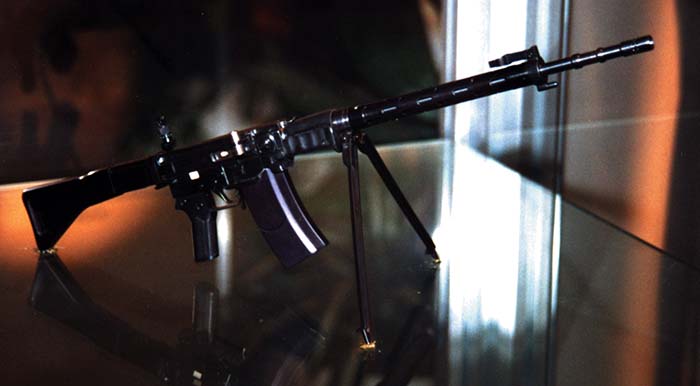
We then visited the SIG museum located within the factory itself. Here I was free to photograph and inspect the entire SIG product line from the very first flintlock rifles and sword bayonets, right up to the most recent pistol designs and military battle rifles. On display were many one off prototypes and trials weapons, as well as factory cutaway examples and rare accessories. Special commissioned firearms were also displayed and could best be described as absolute works of art such as the P-210 Seven Hundred Year Jubilee Pistol. Also exhibited was an exact replica of the last military issue battle rifle in 1/5 scale! Only about 12 inches overall, this model was an exact duplicate of the full auto Sturmgewehr 57. Many on the company’s successful assault rifle designs were displayed, from tool room mockups right through to the actual issued weapon. Also on display were completely dressed and outfitted mannequins wearing battle uniforms from many eras of Switzerland’s armed neutrality. Many tripod mounted, beltfed machine guns and dual magazine fed designs were presented as issued, with battle optics and ancillary gear.
All too soon my visit with SIG was over. Indeed it was a rare opportunity to see firsthand how one of the world’s best firearms manufacturers has stayed at the top of the list. Never said to be inexpensive or poorly made, the designs of Schweizerische Industrie Gesellschaft remain much in demand throughout the world. Their reputation of quality and modern design suits them well.
| This article first appeared in Small Arms Review V1N3 (December 1997) |



